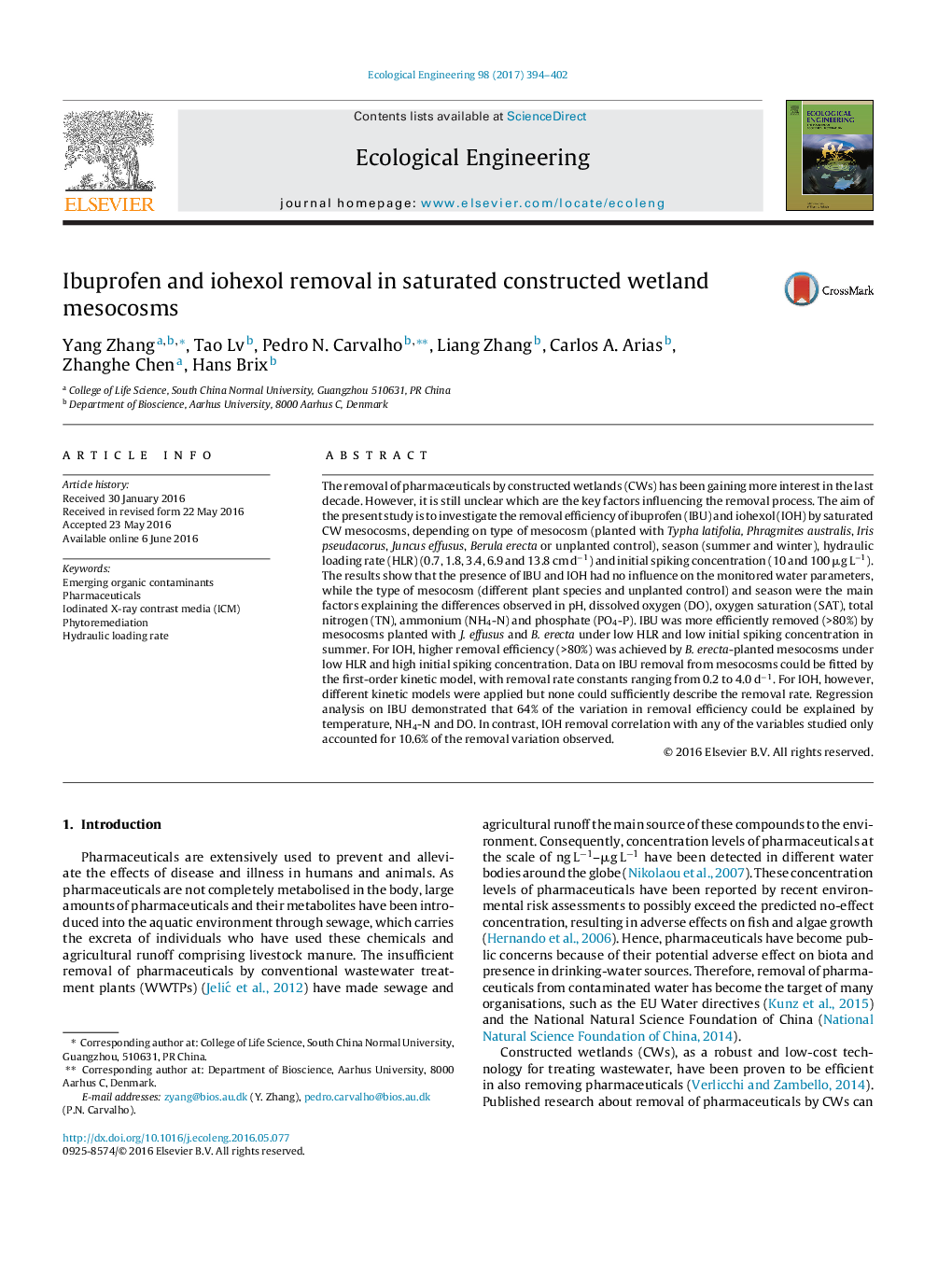| Article ID | Journal | Published Year | Pages | File Type |
|---|---|---|---|---|
| 5744042 | Ecological Engineering | 2017 | 9 Pages |
â¢CWs performance was not affected by the presence of ibuprofen and iohexol.â¢Ibuprofen and iohexol were removed efficiently (>80%) in the CWs mesocosms.â¢Season, plant species, HLR and concentration affected removal.â¢Removal through phytoaccumulation and substrate sorption was negligible.â¢Higher temperature and aerobic condition stimulated compounds removal.
The removal of pharmaceuticals by constructed wetlands (CWs) has been gaining more interest in the last decade. However, it is still unclear which are the key factors influencing the removal process. The aim of the present study is to investigate the removal efficiency of ibuprofen (IBU) and iohexol (IOH) by saturated CW mesocosms, depending on type of mesocosm (planted with Typha latifolia, Phragmites australis, Iris pseudacorus, Juncus effusus, Berula erecta or unplanted control), season (summer and winter), hydraulic loading rate (HLR) (0.7, 1.8, 3.4, 6.9 and 13.8 cm dâ1) and initial spiking concentration (10 and 100 μg Lâ1). The results show that the presence of IBU and IOH had no influence on the monitored water parameters, while the type of mesocosm (different plant species and unplanted control) and season were the main factors explaining the differences observed in pH, dissolved oxygen (DO), oxygen saturation (SAT), total nitrogen (TN), ammonium (NH4-N) and phosphate (PO4-P). IBU was more efficiently removed (>80%) by mesocosms planted with J. effusus and B. erecta under low HLR and low initial spiking concentration in summer. For IOH, higher removal efficiency (>80%) was achieved by B. erecta-planted mesocosms under low HLR and high initial spiking concentration. Data on IBU removal from mesocosms could be fitted by the first-order kinetic model, with removal rate constants ranging from 0.2 to 4.0 dâ1. For IOH, however, different kinetic models were applied but none could sufficiently describe the removal rate. Regression analysis on IBU demonstrated that 64% of the variation in removal efficiency could be explained by temperature, NH4-N and DO. In contrast, IOH removal correlation with any of the variables studied only accounted for 10.6% of the removal variation observed.
